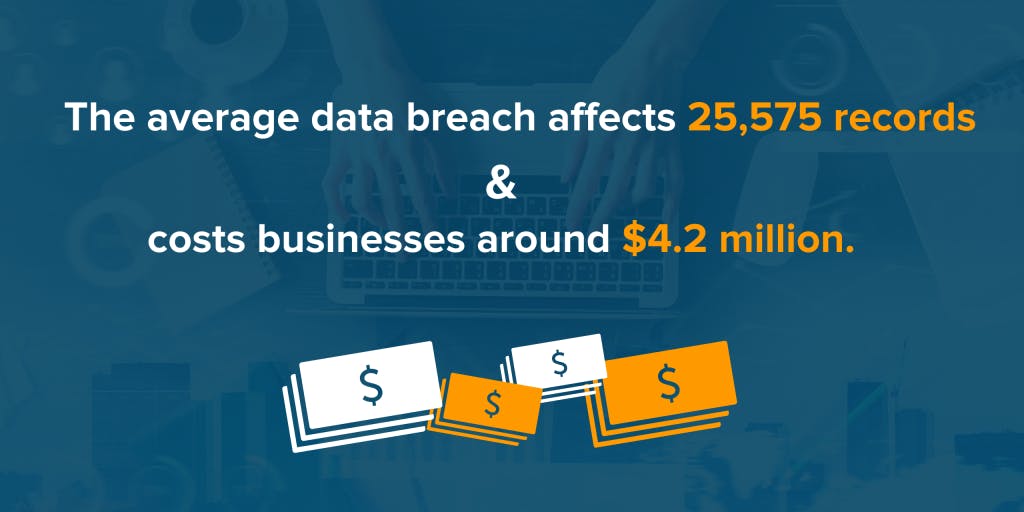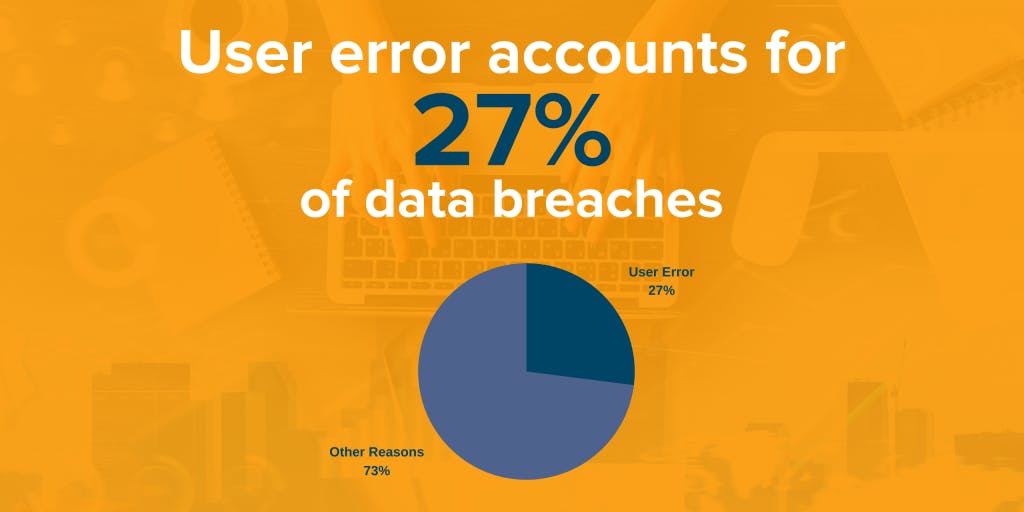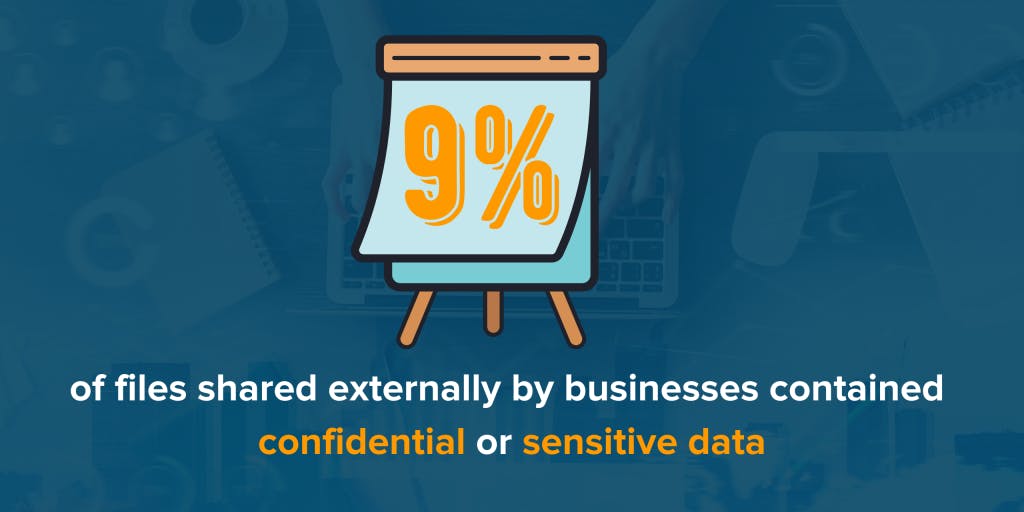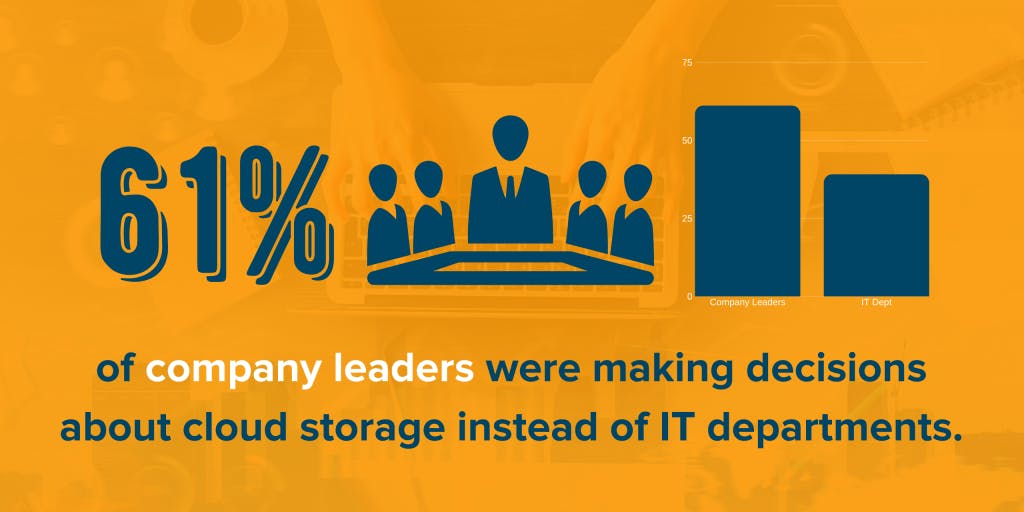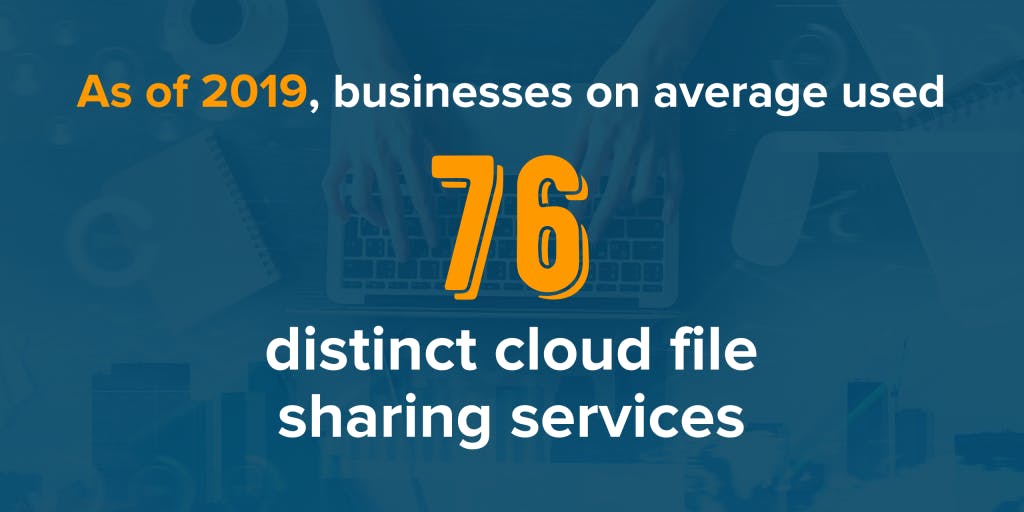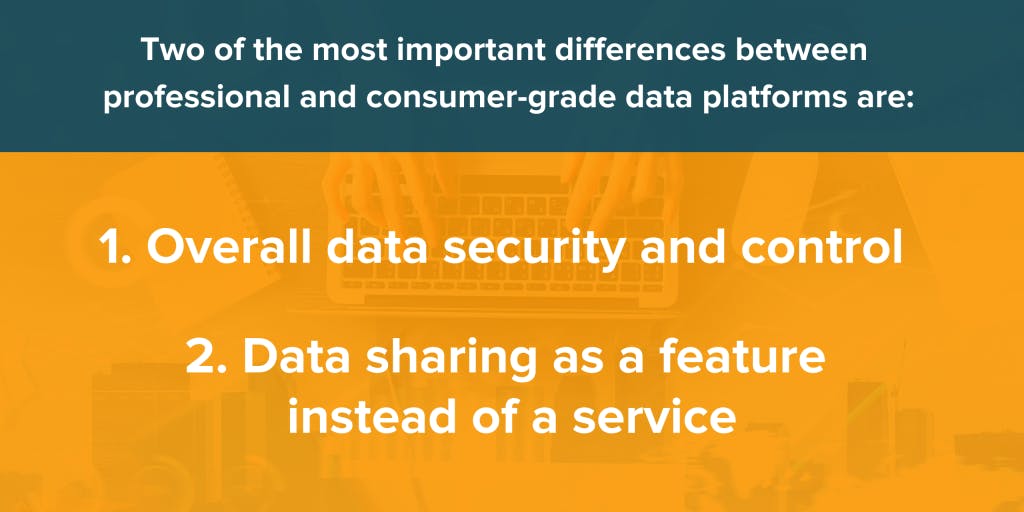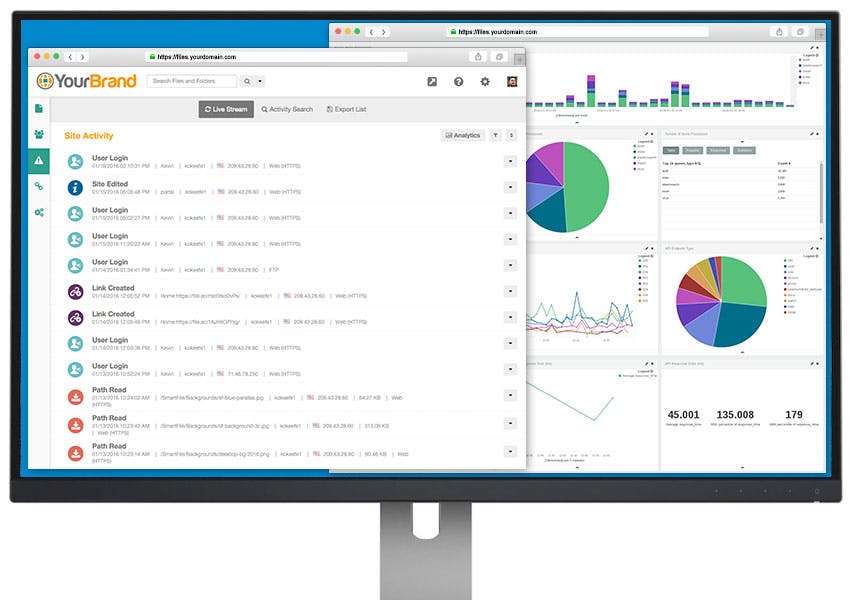As a business owner, you know every lead, every data point, and every piece of content is an investment – and investments need to be protected. However, if your company is currently using Google Drive, Dropbox, WeTransfer, or similar platforms to store and manage its files, it’s time to consider an upgrade.
While these consumer-grade file sharing platforms are okay when you’re just starting out, as your business scales and grows, the more vital and private data you collect and take responsibility for. To prevent breaches, keep up with increasing storage needs, and generally maintain control of your company, it’s important to upgrade and move away from using consumer-grade servers as your filing platforms.
Here are some of the many reasons you should replace your consumer-grade file sharing system with a professional solution:
At this point, businesses are almost entirely run via the Internet. Everything from internal communications, interacting with customers, and collaborating with external stakeholders involves some type of online platform for data storage and sharing. While there’s no doubting the benefits of this setup, it’s important to recognize the quick and free movement of information as a double-edged sword.
According to IBM, the average data breach affects 25,575 records and costs businesses around .2 million. These figures also don’t account for the reputational damage a company suffers, with customers and other stakeholders losing confidence in the organization’s data security. Unfortunately, data breaches and leaks can happen to any company, but here are some more reasons a professional-grade file sharing platform greatly decreases the risks over consumer-grade applications.
No matter how careful they are, any team that works with external parties carries some risk of accidentally sharing private information. This risk is especially present in businesses using consumer-grade filing platforms. Google Drive, Dropbox, and other apps like them don’t offer encryption or solid administrative control.
The data stored on these drives isn’t properly protected the way it would be in a secure network that offers encryption, strategic sharing permissions, and complete records of file access. Professional-grade platforms are also more efficient at safeguarding and backing up data to prevent loss. Great options like links with expiration dates and temporary passwords also exist to protect information shared with external contacts.
User error accounts for 27% of data breaches according to IBM, so even honest mistakes put your company at greater risk if the proper protections are lacking. While IT training can decrease the chance of user error for some employees, replacing your consumer-grade file sharing platform will treat the root issue and not just the symptoms. No matter what, your business can’t survive if you lose control of your data in any way. Your secret recipe needs to stay secret, so we recommend avoiding consumer-grade tools to keep control over who has access to your company’s important data.
Staying in control of confidential data is a vital reason to avoid using a consumer-grade file sharing platform, but it paints a bit of a broad brush over the topic of security. We’ve talked about making sure your files are encrypted and regulating access to people outside the business, but security also applies to those inside the organization.
Even though the majority of employees are trustworthy and accurate in their work, consumer-grade filing platforms don’t quite limit the risk of security breaches. Not everyone needs access to every file, and consumer-grade platforms aren’t very strong at restricting access. In 2019, 9% of files shared externally by businesses contained confidential or sensitive data. Even if non-sensitive data isn’t part of the equation, a low-quality platform makes it possible for outdated information to be shared.
By locking permissions and providing folders for specific employees or teams to control, a secure cloud or in-house approach will decrease unnecessary risks not only from data breaches but from accidental leaks or distribution of old information.
According to McAfee, 11% of files stored in a file sharing platform were shared outside of the company. This percentage may not sound high, but considering the number of records kept turns this percentage into a jarring number. For instance, as mentioned earlier the average size of a data breach is around 25,000 records. 11% of this number amounts to 2,750 records.
Even more worrying, 9% of that 11% of records are shared via personal email addresses, especially Gmail. Google has a habit of linking accounts together into one interface, so what kind of risk might a business face if employees are sharing confidential files all while being one click away from their personal email account? All of the aforementioned issues with using a consumer-grade file-sharing platform can come back to haunt a business when compliance violations are considered.
A sneaky trend that consumer-grade filing sharing platforms likely contribute to is BYOD or “bring your own device.” This issue usually stems from employees using personal devices (or worse, public devices like hotel computers) to access work files. What’s the harm? They can log in with their Google credentials from anywhere and get more done right?
Wrong. Every time an employee accesses your company’s private data on an unauthorized device, they risk theft, breaches, and compliance violations.
Consumer-grade file sharing platforms contribute to problems and risks like these in part because they reduce I.T.’s oversight of your company’s tech. Ironically, the use of unsecured platforms like Google and Dropbox is usually a result of IT being left out of the conversation. In 2019, 61% of company leaders were making decisions about cloud storage instead of IT departments.
By including or allowing IT leaders to take control of discussions about data, their expertise will likely lead them to suggest an in-house or private cloud solution over a consumer-grade filing system (not to mention a crackdown on employee use of personal devices).
In 2019, the average file size used by businesses was 3.13 MB and file sizes are growing by 15-20% each year, according to Egnyte. As data collection grows as well as business size, organizations will need more and more space to keep this data and a server which can grant specific permissions to each user – all without crashing. The user experience also needs to be considered, both from the internal functionality and external interface. A good platform should allow employees to accurately store and access information internally and create a seamless experience for customers and other external stakeholders.
As of 2019, businesses on average used 76 distinct cloud file sharing services. This is bad news not only for IT departments trying to maintain oversight of the business’s tech and data, but it’s also a nightmare for marketing and public relations teams working to cultivate a strong reputation through consistency in communications.
For these teams, concerns extend beyond an inconsistent voice and appearance across platforms – brand impersonation is another potential threat. If anyone in your company is given free rein to put together and share “branded” materials without oversight (another issue made possible by using consumer-grade file sharing), the inconsistency makes it possible for imposters to slip into the mix. Keeping your data safe by investing in a professional-grade data storage system will not only protect the data itself but maintain a reputable and trustworthy brand name to keep your sales and communications on track.
What Counts as a Professional-Grade Platform?
A professional-grade platform’s main function is to store data in a secure, controlled environment, often a private cloud or a physical, in-house data bank. There’s an important perspective shift involved with a professional-grade platform: rather than important information being seen as a means to an end, it will be viewed as the vital investment it really is. By putting a focus on your data’s security and restricting its ability to be broadcast, you’ll take control of your business’s future while simultaneously protecting it.
Move to SmartFile
SmartFile is a professional-grade file transfer protocol (FTP) product that makes it easy to manage and share large file structures inside and outside of your business with a perfect blend of simplicity for users and control for IT. When you invest in a SmartFile system, your business benefits from data protection, secure file transfers, and branded web portals all featuring an easy user experience.
SmartFile Cloud Solutions
Make secure file sharing a breeze for your employees and customers by allowing them to send, receive, and manage files through their desktop, browser, FTP client, and our API. Our system tracks and records file and user activity to ensure compliance, along with email notifications for instant alerts.
As mentioned earlier, professional-grade platforms treat file sharing as a feature instead of an entire service. That’s why SmartFile features granular permissions and access rights to ensure only authorized users can see certain files. A simple interface lets users securely access files onsite and offsite while maintaining security to reduce the risk of data breaches, theft, or user error.
SmartFile’s cloud solutions combine the data access your business’s stakeholders need, the management desired by IT, and the compliance required for regulated industries. Our file sharing platform’s ability to give I.T. control while letting everyone else work the way they want in a low-risk system makes it more than just a file-sharing service – it’s a better way to work.
SmartFile On-Premise Solutions
Our physical, on-premise solutions provide a secure gateway to your cloud and take your business’s data storage and sharing to the next level with our FileHub system. This system is a virtual file management server hosted behind your firewall and features a central port allowing you to manage information hosted natively or on your network storage, FTP servers, Windows servers, and application storage.
Your business’s users can still access files through their favorite tools, like web browsers, Outlook, mounted drives, FTP clients, and mobile devices, and all of the enterprise file sharing and management behavior is recorded with HIPAA compliant activity records and audit trails.
FileHub stands apart by allowing you to store files on the premises (even across multiple locations) and is built to scale up and out with your growing business.
Some of the other features boasted by SmartFile’s solutions and FileHub include:
- Secure access to network files off-site
- Sharing and exchanging files via HTTPS, SFTP, FTPS
- Connecting to users via branded, responsive portals
- Exporting data (Syslog)
- Authentication via AD/LDAP
- Automating the complete file lifecycle
- Managing other cloud storage
While Google Drive, Dropbox, and WeTransfer are fair starting points, business data quickly becomes of vital importance. This information must be treated as an investment and as a vital asset to your business’s security, productivity, and integrity.
If your company is growing, isn’t it about time to leave behind your consumer-grade file-sharing platform and scale your business with a professional solution?

